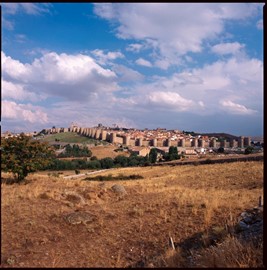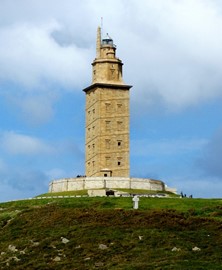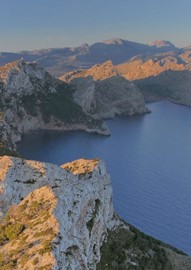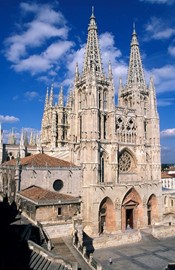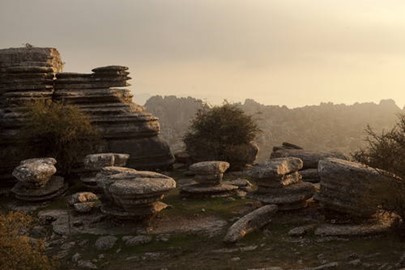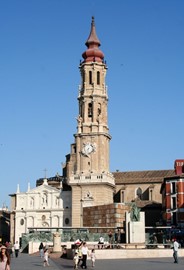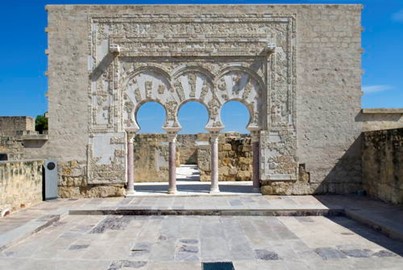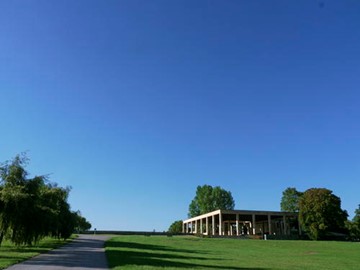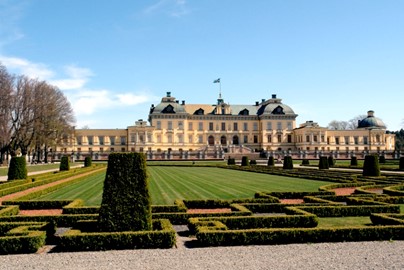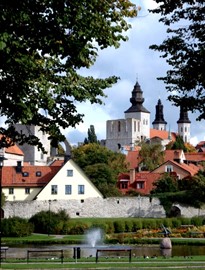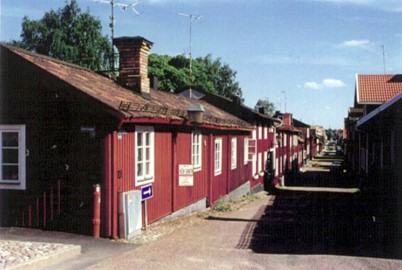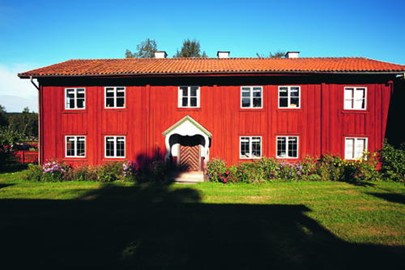region :: europe and north america
Ávila
The Old Town of Ávila, a UNESCO World Heritage site in Spain, is renowned for its well-preserved medieval architecture, including its iconic city walls constructed in the 11th century. These walls, featuring 88 towers and nine gates, encircle a historic center filled with Romanesque and Gothic churches, such as the Ávila Cathedral, begun in 1091. The site reflects a blend of military, religious, and cultural influences, showcasing Spain’s rich historical legacy. Its significance lies in its exemplary urban ... Read More
Tower of Hercules
The Tower of Hercules is an ancient Roman lighthouse and UNESCO World Heritage site, recognized for its historical and architectural significance. Built in the 1st century AD, it stands as the oldest functioning lighthouse in the world, originally constructed to guide ships along the Atlantic coast. Its robust stone structure, later renovated in the 18th century, blends Roman engineering with neoclassical design, symbolizing centuries of maritime heritage. Today, it serves as both a navigational aid and a c... Read More
Palau de la Música Catalana
The Palau de la Música Catalana and Hospital de Sant Pau are two UNESCO World Heritage sites in Spain, celebrated for their architectural brilliance and cultural significance. The Palau, designed by Lluís Domènech i Montaner, is a stunning concert hall known for its intricate modernist design, featuring vibrant stained glass and ornate details. Nearby, the Hospital de Sant Pau, also by Domènech i Montaner, showcases a unique blend of functionality and artistry with its decorative pavilions and gardens. Toge... Read More
Seville
The Cathedral, Alcázar, and Archivo de Indias in Seville form a UNESCO World Heritage site renowned for their historical and architectural significance. The Cathedral, a grand Gothic masterpiece, houses the tomb of Christopher Columbus and features the iconic Giralda tower. Adjacent to it, the Alcázar, a stunning royal palace, showcases Mudéjar architecture with intricate tilework and lush gardens. Nearby, the Archivo de Indias preserves invaluable documents from Spain’s colonial era, reflecting its maritim... Read More
Serra de Tramuntana
The Cultural Landscape of the Serra de Tramuntana, a UNESCO World Heritage site in Spain, is a stunning example of human adaptation to a rugged mountainous environment. This unique region showcases an intricate network of terraces, stone walls, and water management systems developed over centuries, primarily for olive and vineyard cultivation. Its historical significance lies in the blend of Islamic and Christian agricultural traditions, reflecting a harmonious coexistence with nature. The site’s picturesqu... Read More
Routes of Santiago de Compostela: Camino Francés and Northern Spain
The Routes of Santiago de Compostela, recognized as a UNESCO World Heritage site, encompass the Camino Francés and other historic pilgrimage paths leading to the shrine of St. James in Santiago de Compostela. These routes, traveled by pilgrims since the Middle Ages, are celebrated for their cultural and historical significance, featuring a network of trails dotted with churches, monasteries, and hostels. The Camino Francés, the most famous route, highlights the architectural and spiritual legacy of this end... Read More
Burgos Cathedral
Burgos Cathedral, a UNESCO World Heritage site in Spain, is a stunning Gothic masterpiece begun in 1221 and completed over centuries. Its intricate facade, adorned with spires and sculptures, showcases exceptional architectural artistry. The cathedral houses notable treasures, including the tomb of El Cid and a golden staircase by Diego de Siloé. Renowned for its historical and cultural significance, it remains a prominent symbol of Spanish heritage.
Antequera Dolmens Site
The Antequera Dolmens Site, a UNESCO World Heritage site in Spain, comprises three prehistoric megalithic monuments: the Menga Dolmen, Viera Dolmen, and Tholos of El Romeral. Dating back to the Neolithic and Bronze Age periods, these structures showcase exceptional engineering and architectural skills of ancient communities, built using large stone blocks. The site also includes two natural monuments, La Peña de los Enamorados and El Torcal, which enhance its cultural and historical significance. Recognized... Read More
Segovia
The Old Town of Segovia and its Aqueduct, a UNESCO World Heritage site in Spain, is a remarkably preserved historic ensemble showcasing Roman engineering and medieval architecture. The iconic Roman aqueduct, constructed in the 1st century AD, stands as one of the best-preserved structures of its kind, channeling water across a dramatic stone-arched span. Complementing this, the Old Town features a picturesque blend of Gothic and Renaissance buildings, including a stunning cathedral and a fairy-tale-like alc... Read More
Mudejar Architecture of Aragon
Mudejar Architecture of Aragon, a UNESCO World Heritage site, exemplifies a unique blend of Islamic and Christian artistic traditions from the 12th to 17th centuries. This style features intricate brickwork, horseshoe arches, and ornate stucco work, reflecting the cultural coexistence of Muslim, Christian, and Jewish communities. Notable examples include churches and towers that showcase this hybrid aesthetic, preserved as a testament to medieval craftsmanship and historical harmony.
Cáceres
The Old Town of Cáceres, a UNESCO World Heritage site in Spain, is a remarkably preserved medieval ensemble featuring a blend of Roman, Islamic, Gothic, and Renaissance architecture. Its historic core boasts narrow cobblestone streets, ancient stone walls, and notable landmarks like the Santa María Cathedral and the Torre de Bujaco, reflecting centuries of cultural influences. This well-maintained urban landscape offers a glimpse into Spain’s rich historical past, attracting visitors with its timeless charm... Read More
Medina Azahara
Medina Azahara, a UNESCO World Heritage site in Spain, is a remarkably preserved 10th-century palace-city built by the Umayyad Caliph Abd al-Rahman III. Constructed as a symbol of power and grandeur, it features intricate architecture, including ornate stucco work, horseshoe arches, and expansive courtyards. Abandoned after less than a century, the site offers a unique glimpse into the sophistication of Islamic civilization in Al-Andalus. Today, it stands as a testament to the region’s rich historical and c... Read More
Birka and Hovgarden
Birka and Hovgården, a UNESCO World Heritage site in Sweden, form a remarkable archaeological complex showcasing the Viking Age's extensive trading networks across Europe. Located on two neighboring islands in Lake Mälaren, Birka was a bustling mercantile town from the 8th to 10th centuries, known for its role as a key trading hub and the site of Sweden’s first Christian congregation, founded in 831 by St. Ansgar. Hovgården, the nearby royal estate, governed the region and features monumental mounds, a rune... Read More
Engelsberg Ironworks
Engelsberg Ironworks, a UNESCO World Heritage site in Sweden, is a remarkably preserved industrial complex established in 1681. It became one of the world’s most advanced ironworks between 1700 and 1800, producing high-quality iron that solidified Sweden’s leadership in the industry during the 17th and 18th centuries. The site features intact buildings, including a blast furnace, forge, and workers’ residences, showcasing historical technology and architecture. Operations ceased in 1919, and it was designat... Read More
Rock Carvings in Tanum
The Rock Carvings in Tanum, a UNESCO World Heritage site in Sweden, are an exceptional collection of Bronze Age petroglyphs dating back to 1800–500 BCE. These ancient artworks, etched into smooth rock surfaces, depict a vivid array of human figures, animals, boats, and weapons, offering a glimpse into the daily life, beliefs, and rituals of prehistoric communities. Recognized for their outstanding universal value, the carvings provide a remarkable archaeological record of northern Europe's early societies.
Skogskyrkogarden
Skogskyrkogården, a UNESCO World Heritage site in Sweden, is a remarkable cemetery designed by architects Gunnar Asplund and Sigurd Lewerentz between 1917 and 1920. Known for its harmonious blend of nature and modernist architecture, it features serene landscapes, minimalist chapels, and a tranquil atmosphere that reflects Scandinavian design principles. The site serves as both a functional burial ground and a cultural landmark, attracting visitors for its historical significance and peaceful beauty.
Drottningholm
The Royal Domain of Drottningholm, a UNESCO World Heritage site in Sweden, is a well-preserved historical ensemble featuring a 17th-century palace, a picturesque theater, and a Chinese Pavilion. Originally built as a royal summer residence, it showcases Baroque architecture and beautifully landscaped gardens, reflecting the grandeur of European royal estates. Today, it serves as a residence for the Swedish royal family while remaining open to the public as a cultural treasure, offering insight into Sweden’s... Read More
Visby
The Hanseatic Town of Visby, a UNESCO World Heritage site in Sweden, is a remarkably preserved medieval trading center on the island of Gotland. Its 13th-century ramparts, over 200 warehouses, and historic churches, like the Sankta Maria Cathedral, showcase its past as a key Baltic Sea hub within the Hanseatic League. The town's cobblestone streets and well-maintained ruins offer a glimpse into its prosperous history, making it a standout example of Northern European medieval architecture and urban planning... Read More
Gammelstad
Gammelstad, a UNESCO World Heritage site in Sweden, is a well-preserved example of a traditional Scandinavian church village. Established around a 15th-century stone church, it features over 400 wooden cottages historically used by rural parishioners for overnight stays during religious services and gatherings. This unique settlement reflects medieval customs and the region’s cultural heritage, earning its designation for its historical significance and architectural authenticity.
Laponian Area
This UNESCO World Heritage site in northern Sweden, within the Arctic Circle, spans 9,400 square kilometers of pristine wilderness, encompassing mountains, forests, rivers, and lakes across four national parks and two nature reserves. Recognized in 1996 for its natural beauty and cultural significance, it showcases ongoing geological processes and rich biodiversity while serving as a vital area for the indigenous Sámi people, who maintain their ancestral tradition of reindeer herding through seasonal migrat... Read More
Karlskrona
The Naval Port of Karlskrona, a UNESCO World Heritage site in Sweden, is a remarkably preserved late-17th-century naval city founded in 1680 by King Karl XI. Designed with a grid layout and Baroque influences, it served as a strategic base for Sweden’s navy, featuring intact original structures like fortifications, a shipyard, and residential areas. Its historical significance lies in its role as a model for European naval planning, blending military and civilian functions seamlessly. Today, it remains an a... Read More
Southern Oland
The Agricultural Landscape of Southern Öland, a UNESCO World Heritage site in Sweden, showcases a unique limestone plateau shaped by human activity for over 5,000 years. Its distinct features include ancient villages, arable fields, and grazing lands like the Stora Alvaret, reflecting a remarkable adaptation to the island's geology and climate. This living agrarian landscape preserves prehistoric settlements, medieval land divisions, and a rich biodiversity, offering a glimpse into a continuous cultural tra... Read More
Falun Mining Area
This UNESCO World Heritage site in Sweden encompasses a historic copper mine that operated for over a millennium, from the 10th century until 1992, significantly shaping the region’s industrial and cultural landscape. At its peak in the 17th century, it supplied two-thirds of Europe’s copper, influencing global mining technology and funding Sweden’s military endeavors. The site includes the expansive Great Pit, a result of a 1687 collapse, alongside a well-preserved 17th-century planned town, miners’ cottag... Read More
Grimeton Radio Station
Grimeton Radio Station, a UNESCO World Heritage site in Sweden, is a remarkably preserved early 20th-century long-wave radio station, operational since 1924. Built under the direction of engineer Ernst Alexanderson, it showcases pioneering technology with its massive Alexanderson alternator, capable of transatlantic communication. Today, it serves as a historical monument and museum, offering insight into the development of global telecommunications. Its unique industrial architecture and functional equipme... Read More
Farmhouses of Halsingland
The Farmhouses of Hälsingland, a UNESCO World Heritage site, are a collection of seven well-preserved timber farmhouses from the 19th century, showcasing a unique blend of rural architecture and folk art. Built by prosperous farmers, these homes feature elaborately decorated interiors with vibrant paintings and stencils, reflecting influences from Baroque and Rococo styles. Designated in 2012, they represent the peak of a centuries-old timber-building tradition and the social status of their owners. Many ar... Read More
